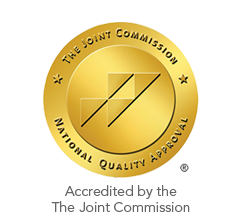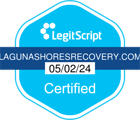Fentanyl is a powerful synthetic opioid, originally developed for medical use to treat severe pain, especially after surgery. It is 50 to 100 times more potent than morphine, making even small amounts highly dangerous. While it has legitimate uses in hospitals, illegal fentanyl, often mixed with other drugs, has fueled a deadly wave of overdoses across the U.S.
A shocking reality about fentanyl is that just one counterfeit pill can kill. Drug dealers mix fentanyl with other substances, making it nearly impossible to detect. Many people unknowingly consume fentanyl in counterfeit pills or laced drugs, putting their lives at serious risk. In Dana Point, CA, as elsewhere, fentanyl is claiming lives at an alarming rate.
Orange County, California, known for its coastal beauty, is facing a growing problem with fentanyl addiction. As fentanyl use spreads, so do overdose deaths, leaving families devastated. This deadly opioid has deeply impacted the community, with users becoming dependent on its effects, often without realizing the extreme risks involved.
Laguna Shores Recovery in Orange County, CA, provides compassionate care to help people break free from fentanyl addiction. Through personalized treatment plans and a supportive environment, they guide people on the path to healing and long-term recovery.
California health officials recently issued a public advisory due to a sharp rise in fentanyl-related overdose deaths. From 2019 to 2021, the state saw an alarming 182% increase in these deaths, with a noticeable spike in recent months. This surge puts immense pressure on local healthcare systems, including in Dana Point, CA.
Fentanyl overdoses can happen quickly and are often fatal if not addressed immediately. The most common signs of a fentanyl overdose include extreme drowsiness, confusion, shallow or stopped breathing, and pinpoint pupils. When breathing slows, the brain and other organs don’t receive enough oxygen, leading to unconsciousness or death. People experiencing these symptoms require emergency medical help as soon as possible.

Signs of Fentanyl Poisoning
Fentanyl poisoning occurs when someone unknowingly ingests the drug, often through counterfeit pills. Warning signs of fentanyl poisoning are similar to overdose symptoms. It can be difficult to detect until it’s too late, which is why it’s essential to recognize these early warning signs.
- Pinpoint Pupils: The person’s pupils may become unusually small, even in low light.
- Clammy Skin: The skin might feel cold or damp to the touch, another indicator of oxygen deprivation.
- Severe Drowsiness or Confusion: The person may struggle to stay awake or seem disoriented and confused.
- Gurgling or Choking Sounds: This could indicate airway blockage or difficulty breathing due to fentanyl’s effects on the respiratory system.
- Slow Heart Rate: The heart begins to beat much slower than normal, which can lead to dangerous health consequences.
- Limp Body: The person’s body may become floppy or weak, indicating a severe reaction to fentanyl.
- Bluish Lips or Skin: A sign that the person isn’t getting enough oxygen, often referred to as cyanosis.
- Shallow or Stopped Breathing: Fentanyl can severely slow down or stop breathing altogether, leading to a life-threatening situation.
- Unresponsiveness or Unconsciousness: The person may be unable to wake up or respond to stimuli due to fentanyl poisoning.
Effects & Warning Signs of Fentanyl Poisoning
The effects of fentanyl are incredibly strong, even in tiny amounts. Many overdose victims have no idea they are taking fentanyl, as it is often mixed with other substances like heroin or cocaine. According to the CDC, fentanyl caused 74,700 deaths in the U.S. in 2023.
- Breathing Problems: One of the most dangerous effects of fentanyl poisoning is how it slows or stops breathing entirely. Since fentanyl is so powerful, even a small amount can cause severe respiratory issues. According to the CDC, synthetic opioids like fentanyl are responsible for a growing number of overdose deaths in the U.S.
- Lack of Oxygen: When breathing slows, the body doesn’t get enough oxygen, which leads to bluish skin or lips, also known as cyanosis. This is one of the critical signs of fentanyl poisoning that requires immediate attention.
- Heart Complications: Fentanyl poisoning can cause the heart rate to slow down drastically. In some cases, it can lead to cardiac arrest if not treated in time.
- Loss of Consciousness: People experiencing fentanyl poisoning often become extremely drowsy or fall into unconsciousness. This is a major warning sign and should not be ignored.
- Accidental Ingestion: Many cases of fentanyl poisoning occur because people unknowingly take fentanyl mixed with other drugs. The rise of counterfeit pills has made this more common, putting more people at risk without their knowledge.
The potency of fentanyl means that just a small amount can be lethal. Always be cautious, especially with street drugs that may be laced with fentanyl. Be aware of the signs of fentanyl poisoning and act quickly if you suspect someone is experiencing an overdose.
Fentanyl Overdose Causes and Risk Factors
Understanding the causes and risk factors of a fentanyl overdose can help prevent tragic outcomes. Fentanyl is an extremely potent synthetic opioid, making it a major contributor to the opioid crisis.
- High Potency: Fentanyl is 50 to 100 times stronger than morphine, which makes it extremely easy to overdose, even with a tiny amount. Because of its strength, it’s a leading cause of overdose deaths in the U.S.
- Mixing Drugs: Many fentanyl overdoses happen when people unknowingly consume it mixed with other drugs, like heroin, cocaine, or counterfeit pills. These drugs are often laced with fentanyl without the person’s knowledge, significantly increasing overdose risk.
- Lack of Tolerance: People who don’t regularly use opioids are at a much higher risk of overdosing on fentanyl because their bodies can’t handle its potency. Someone trying a drug for the first time, or after a period of abstinence, is especially vulnerable.
- Previous Opioid Use: Those with a history of opioid use are at a greater risk of fentanyl overdose. Since fentanyl is much stronger than other opioids, users may misjudge how much they can handle, leading to an overdose.
- Counterfeit Pills: The rise of fake prescription pills, often disguised as painkillers or anti-anxiety medications, has made fentanyl exposure more common. People may take a pill they think is safe, but it could be lethal due to the presence of fentanyl.
- Age and Health Conditions: Older adults or people with pre-existing health issues, especially related to the heart or lungs, are more at risk for overdose because their bodies may struggle to handle fentanyl’s effects.
- Increased Availability: Fentanyl is becoming more accessible and widespread, contributing to a sharp increase in overdose deaths. In 2021, more than 70% of all U.S. drug overdose deaths involved synthetic opioids like fentanyl, highlighting its devastating impact.
Understanding these causes and risk factors can help raise awareness and save lives by encouraging people to be cautious and informed when it comes to fentanyl.
How to Help Prevent Overdose
With the growing opioid crisis, preventing overdoses has never been more important. Every year, thousands of lives are lost to preventable overdoses. Raising awareness, taking action, and offering support through drug rehab in Mission Viejo are key steps in reducing overdose rates.
Reducing Overdose Risk
Reducing the risk of overdose starts with education and access to resources. People can take steps like using fentanyl test strips to check drugs, not using substances alone, and having naloxone on hand in case of emergency. In 2021, more than 100,000 overdose deaths occurred in the U.S., many involving fentanyl, which highlights the urgent need for awareness and safety practices.
Opioid Abuse Overdose Prevention Initiatives
Many organizations and government bodies have launched opioid abuse overdose prevention initiatives aimed at reducing deaths. These initiatives include:
- Naloxone Distribution Programs: Free access to naloxone can save lives. States and local health departments often offer naloxone kits to people at risk and their families.
- Prescription Monitoring Programs: These programs track opioid prescriptions to prevent abuse and reduce the risk of overdose.
- Education Campaigns: Public health organizations are educating communities on the risks of opioid misuse, emphasizing harm reduction strategies like safe injection sites and supervised drug use to reduce overdose deaths.
- Avoid Using Drugs Alone: Overdoses often happen when people are using drugs by themselves. Having someone nearby who can call for help or administer naloxone can make the difference between life and death.
- Test Drugs For Fentanyl: Fentanyl test strips are available and can detect the presence of fentanyl in other substances. This simple step can prevent accidental overdose.
What to Do If Someone Is Experiencing a Fentanyl Overdose
If you suspect someone is having a fentanyl overdose, acting quickly can save their life. Here’s what you need to do:
- Call 911 Immediately: This should be your first step. Provide the dispatcher with as much information as possible, including the person’s symptoms and location.
- Administer Naloxone (Narcan): If you have naloxone, use it right away. Naloxone can reverse the effects of a fentanyl overdose if administered quickly. Many states allow pharmacies to sell it without a prescription.
- Perform Rescue Breathing: If the person is not breathing or has very shallow breaths, begin rescue breathing by tilting their head back, pinching their nose, and giving two breaths into their mouth. Continue giving one breath every 5 seconds until help arrives.
- Stay With Them: Don’t leave the person alone. Fentanyl’s effects can return even after naloxone is given, so it’s important to stay and monitor them until emergency services take over.
- Watch For Improvement: If the person starts breathing again, they still need medical attention. Fentanyl is extremely powerful, and the overdose could return as naloxone wears off.
Aftercare Following an Overdose
Recovering from an overdose doesn’t end once the immediate crisis is over. Aftercare is essential in helping people avoid future overdoses. This includes connecting people with treatment programs for opioid addiction, offering mental health support, and creating a personalized recovery plan. Aftercare services also involve regular check-ins, therapy, and support groups to ensure long-term success. Ensuring people receive ongoing care after an overdose can prevent relapses and save lives.
Preventing overdose requires a community effort—by raising awareness, reducing stigma, and providing access to life-saving tools, we can help reduce the number of overdose deaths worldwide.

Fentanyl Addiction Treatment at Laguna Shores Recovery
Fentanyl is an extremely powerful and dangerous opioid, with even small amounts capable of causing overdose. Sadly, fentanyl overdoses are on the rise, with thousands of people losing their lives each year due to its potency. The good news is that recovery from fentanyl addiction is possible with the right treatment and support.
At Laguna Shores Recovery, we provide a comprehensive approach to fentanyl addiction treatment. Our program starts with medical detox, which helps the body safely clear the drug while managing withdrawal symptoms. After detox, we focus on therapy and support to help people understand the root causes of their addiction and develop healthy coping skills. Whether it’s through one-on-one counseling or group therapy, we’re here to help people heal, rebuild their lives, and avoid relapse.
Fentanyl addiction is challenging, but you don’t have to face it by yourself. If you or a loved one is struggling with fentanyl addiction, contact Laguna Shores Recovery today. We’re ready to support you as you begin your path to recovery.

 Matthew Beck B.A, M.A, LMFT
Matthew Beck B.A, M.A, LMFT 


